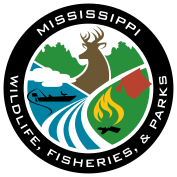
| Species | Detail |
|---|---|
| Largemouth Bass | Fish the edges of creek and river channels with slow rolled spinner baits, jigs, and/or soft plastics. Use faster moving baits (buzz baits, spinner baits, vibrating jigs) in shallower water in coves near any cover (stumps, brush tops, etc.). There will be a tournament Saturday April 6. |
| Crappie | Bruce at Wyatt's Crossing Outdoors 901-870-0298 reported several limits late last week after the water settled down. Fish were biting black/chartreuse or pink jigs 1.5 to 4 ft deep up or down the river, wading the shallows, or walking creek banks. Pre- and post-spawn fish have been holding a little deeper in the mouths of major creek coves and/or in cover near potential spawning areas. Colder weather this week will likely put fish in a holding pattern until it warms again. Use bigger baits and/or fish deeper to target larger crappie. Replace treble hooks with single hooks and/or pinch down the barbs to make releasing short fish faster and less damaging; it does no good to release dead fish. |
| Bream | Fish natural baits under a bobber near any cover (timber, riprap, etc.). |
| Catfish | Fish night crawlers or stink baits in the river and creeks as long as there is rainfall runoff. Otherwise, fish various natural baits over main lake flats with rod and reel (tight lining), noodles (jugs), or trot lines. |
| White Bass | The spawning run is underway. Fish sandbars in the river (Wyatt's Crossing to above Hwy 7) or in the creeks (best access may be from the banks). Otherwise, fish sandy, main lake points with shad-imitating lures (jigs, small crank baits, etc.). There are no size or number limits on white bass. These fish die quickly in a live well. They will keep and taste better if put immediately into "slush" (ice/water mix). |
Fish started biting late last week after the lake level stabilized and temperatures rose, but a cold front moving through this week will likely slow things down.
Always check the links in the "Water Level" section for the lake level and if it's rising or falling. A big rain can change conditions quickly. Adjust to conditions like the fish do. Except for catfish, fishing is usually better on a slow fall than a fast rise. Water falling, fish deeper; water rising, fish shallower.
Crappie spawning starts when average daily water temperature at “fish depth” is about 58, peaks at about 65, and ends at about 75 F. Timing and duration of the spawn depends on temperature and water level trends, weather fronts, and moon phases. Fish will spawn shallower in rising water, deeper in falling water. Bigger females usually spawn first. Males of any size can be caught throughout the spawn. Males will stay on the nest until eggs hatch and fry swim up (4 - 7 days) even if the water rises or falls (unless the nest gets too shallow). Males of both Black and White Crappie get darker during the spawn; females do not change color. Historically, crappie spawn on the flood control reservoirs from the last week of March until about the first week of May, but it may shift earlier, later, or be split into two or more peaks due to weather and water fluctuations.